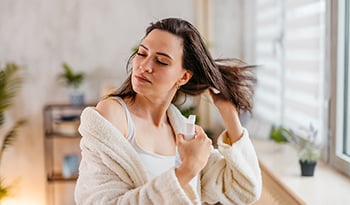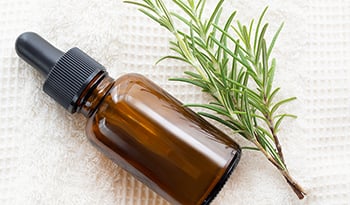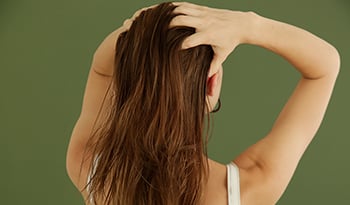Hair Loss: Best Supplements To Promote Growth
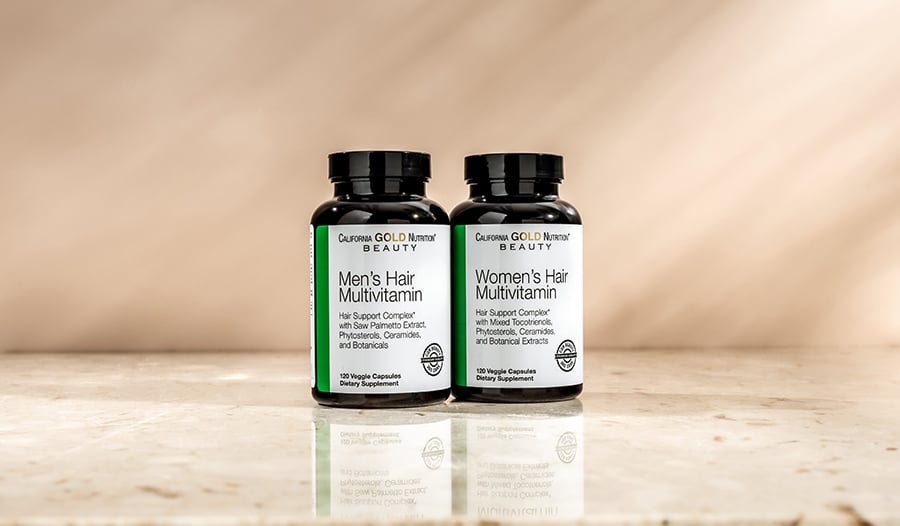
Around the age of 40, hair growth naturally begins to slow. New hair fails to replace lost strands as quickly, leading to a gradual decline in hair density. While aging and genetics play a significant role, factors such as nutrition and hormones also influence whether hair is replenished at a rate that sustains a full, healthy head of hair.
Many men and women may be able to improve hair health and slow down the shedding or loss of hair by using focused nutritional, antioxidant, and phytochemical dietary supplements for hair health.1,2
These strategies focus on improving the health of the dermal papilla, a key structure at the base of the hair follicle. Dermal papilla cells are the "command center" of hair follicles, relying on nutrients and antioxidants to support healthy hair growth. Improving the health of these cells is the real key to enhancing overall hair health.
Although genetic and hormonal factors are clearly significant in age-related hair thinning, there are important nutritional and lifestyle factors (e.g., obesity, smoking, and alcohol consumption) to consider.4-9
The Best Nutrients For Preventing Hair Loss
A deficiency of any number of nutrients can lead to impaired hair growth or thinning of the hair. B vitamins (especially vitamin B12, folate, thiamine, and biotin), vitamin A, D3, zinc, selenium, magnesium, silica, and iron are the most important.5-8
Taking a high potency, multiple vitamin and mineral formula designed specifically to supply these nutrients, along with additional antioxidant and phytochemical support, has been shown to be beneficial in promoting healthier hair growth in both men and women.10-12
Specifically, studies show that nutritional supplementation can be effective in improving visible hair health, growth, volume, thickness, and fullness with less hair shedding.
Here’s a breakdown of the essential vitamins and minerals that play a vital role in supporting healthy hair, along with their specific benefits:5-8
Nutrient | Key Aspect in Hair Health | Deficiency Consequence |
|---|---|---|
B12 | DNA synthesis, oxygen delivery | Shedding, thinning |
Folate | Cell division | Impaired growth, thinning |
Thiamine | Energy metabolism | Weak hair structure |
Biotin | Supports the production of keratin, the main protein in hair | Brittle, thinning hair |
Vitamin A | Sebum production, follicle health | Dry scalp, fragile hair |
Vitamin D3 | Hair cycle regulation, stem cell activation | Miniaturization, hair loss |
Zinc | Follicle repair, sebum production | Shedding, poor recovery |
Selenium | Antioxidant protection | Weak hair, diffuse thinning |
Magnesium | Protein synthesis, hormone balance support | Weak hair, sensitivity to stress |
Silica | Promotes collagen and elastin integrity that forms the supportive matrix around hair follicles. | Weak hair, less resilient hair growth |
Iron | Oxygen delivery, metabolism | Shedding, diffuse thinning |
If you are looking for a comprehensive dietary supplement to provide targeted support for healthy hair growth, I recommend one containing the above ingredients.
Iron Deficiency And Hair Health
Iron deficiency can be a major factor in causing hair loss, especially in menstruating women. To determine iron levels in these women, a blood test called serum ferritin is recommended.
There is a very strong association between low body iron stores and increased shedding in women when serum ferritin levels are below 30 mg/L.13-15 When serum ferritin levels fall below 30 mg/L, hair growth and regeneration are impaired as the body seeks to conserve the iron. Improvements in serum ferritin often correlate with improved health of the hair and the reduction of bothersome shedding.
Antioxidant Support In Hair Health for Men and Women
Hair growth in men and women is primarily driven by genetics and hormonal influences (discussed below). However, oxidative stress, the accumulation of harmful reactive oxygen species (ROS) and the damage they produce, and nutritional antioxidant status play a significant role in hair health as we age.8,16,17
- Hair follicle miniaturization: Oxidative stress damages cells within hair follicles, accelerating the shrinking of hair follicles in a process known as hair follicle miniaturization.
- Increased burden of old (senescent) cells: Inadequate replacement of old, senescent cells with new cells leads to increased susceptibility to hair follicle damage.
- Stem cell exhaustion: Hair follicle stem cells are responsible for creating new hair-producing cells. With oxidative stress, they can become depleted or “exhausted,
- Inflammation: ROS can activate inflammatory pathways (e.g., NF-κB), leading to inflammation around hair follicles, which further weakens their health.
- Reduced blood flow: Oxidative stress can impair the microcirculation to the hair follicle, thereby reducing oxygen and nutrient delivery to build hair.
Antioxidants neutralize ROS. And whether from diet or supplements, antioxidants can help interrupt this damaging cycle in several ways:8,16-19
Support follicle and stem cells | Prevent oxidative damage to DNA, proteins, cell structures, and follicle stem cells. |
Reduce inflammation | Suppress inflammatory compounds that can damage follicles (e.g., IL-6, TNF-alpha). |
Protect mitochondrial function | Maintain energy production needed for healthy hair cell growth. |
Improve scalp microcirculation | Support better oxygen and nutrient delivery to hair follicles. |
Stabilize hormonal sensitivity | May reduce the sensitivity of cells to detrimental hormones by lowering oxidative triggers in the scalp. |
Delay follicle miniaturization | Preserve hair shaft thickness and anagen (growth) phase longevity. |
Top Antioxidants To Combat Hair Loss
Dietary antioxidant intake correlates with improved skin and scalp parameters in clinical research, suggesting a possible benefit for slowing hair thinning.
Here are some of the dietary antioxidants that have been specifically studied for their role in protecting the scalp and hair follicles and promoting hair health.7,8,16,18
- Vitamin C regenerates other antioxidants (like vitamin E) and supports collagen around hair follicles.
- Vitamin E is the primary fat-soluble antioxidant that protects follicle membranes from oxidative damage.
- Selenium is required for glutathione peroxidase, a major internal antioxidant defense system that is especially important in the skin and hair follicles.
- Zinc acts as an antioxidant, also supports immune function, and hormonal metabolism.
- Polyphenols such as fisetin and extracts of green tea, apples, grape seed, and pine bark scavenge free radicals to counter hormone-induced damage to hair follicles and stem cells.
The antioxidant fisetin has shown some interesting effects beneficial in supporting hair health in preclinical studies. In addition to reducing oxidative stress and inflammation around hair follicles, it has been shown to selectively remove damaged old cells to improve the regenerative environment around hair follicles, allowing hair follicle stem cells to maintain the hair growth cycle (anagen phase). Fisetin may also help balance the conversion of testosterone to dihydrotestosterone (DHT), as well as reduce the sensitivity of hair follicles to DHT damage in these preliminary studies.18-21
In addition, tocotrienols are important to mention. These compounds are members of the vitamin E family. Tocotrienols are similar to tocopherols, but with a slightly different chemical structure that makes them inactive in the functions of vitamin E, but more potent as antioxidants. Tocotrienols have shown a number of benefits to hair health beyond their antioxidant activity. For example, some research suggests tocotrienols can help maintain or prolong the growth phase of the hair cycle as well as improve the microcirculation to the hair follicle.22
These mechanisms may be responsible for the positive results in a double-blind, placebo-controlled study.23 In this 8-month trial, subjects were randomly selected to receive tocotrienol supplementation (100 mg mixed tocotrienols) or a placebo daily. Results showed that the tocotrienol group had a 34.5% increase in hair numbers compared to a slight decrease in the placebo group. Researchers attributed this effect primarily to the reduction of oxidative stress in the scalp environment.
Hormonal Considerations
In both male and female pattern hair loss, the chief hormonal aspect is the conversion of testosterone to dihydrotestosterone (DHT). The difference in women is that since testosterone levels are lower, so too is the level of DHT. In both men and women, it is not necessarily the level of testosterone and DHT in the blood but rather an increased sensitivity of hair follicles in the scalp to DHT.
Declining estrogen and progesterone levels also play a role in hair maitenance. In general, estrogen supports scalp hair growth by prolonging the anagen phase (growth phase) of hair follicles. Estrogen and progesterone also counteract some of the effects of DHT on hair follicles. As a result, many women notice worsening of their hair thinning after menopause.
Botanical Support For Hormonal Metabolism
Perhaps the best-known herbal approach to hair health is the fatty acid and sterol extract of saw palmetto (Serenoa repens). This extract is also a popular recommendation for an aging prostate. As men age, even though testosterone levels drop, there is an increased conversion of testosterone to DHT.
Saw palmetto extract has shown some benefit in supporting prostate health and has also been shown to balance the action of the enzyme 5-alpha-reductase that converts testosterone to DHT. It also inhibits the transport of DHT to receptor sites on DNA. Saw palmetto extract can be useful in reducing the effects of DHT in the scalp, as well as supporting hair health in both men and women. The active components of saw palmetto include beta-sitosterol, which has also shown beneficial effects on DHT metabolism and is often added to saw palmetto products to provide additional levels of this key compound.24
In a double-blind, placebo-controlled, clinical study in 80 healthy male and female subjects between the ages of 18 to 50 years old those receiving an oral 400 mg dosage of saw palmetto extract (85% fatty acids and sterols) showed reduced hair fall by up to 29% and a 5.17% increase in hair density compared to baseline levels along with a significant reduction in serum DHT levels compared to placebo.25 However, there was no significant impact on new hair growth.
Perhaps superior to saw palmetto extract in promoting hair health, and specifically promoting new hair growth, is the combination of a black rice extract (Oryza sativa) and prickly pear cactus flower extract (Opuntia cus indica). Earlier studies had shown that the prickly pear cactus flower extract t possessed more significant inhibition in the conversion of testosterone to DHT than saw palmetto extract while the extract of black rice is rich in polyphenol antioxidants known as anthocyanins that have shown an ability to enhance cells located at the base of the hair follicle that play a critical role in controlling hair growth. In a double-blind, placebo-controlled trial in 86 men with pronounced hair shedding, the combination at a dosage of 250 mg per day produced significant benefits.26
Results showed an increase of the total hair density of 9.5% at 6 months compared to 0.3% in the placebo group. The variation of the percentage of hair in the anagen (growth) phase was also increased significantly with this herbal approach, while also simultaneously reducing the telogen (resting) phase.
Consequently, the ratio of the anagen to telogen phase was improved by 85.8% at 6 months, indicating a significant shift to new hair growth. The improvements were also maintained 1 month after supplementation was halted. These results showed quite clearly that this combination produces a significant benefit on hair health and supports hair growth.
Lastly, rice ceramide supplementation may also be helpful. Rice ceramides are a source of a type of lipid (fat molecule) similar to the ceramides naturally found in the outer layers of the skin and scalp, including the hair cuticle (the outermost layer of the hair shaft). Ceramides are necessary to maintain healthy follicles and are also naturally incorporated into the hair shaft itself. Rice ceramides are highly absorbable when taken orally, and there is clinical evidence showing that rice ceramides are incorporated into the skin to promote improved hydration and skin cell function. These benefits may extend to the hair follicle to create a healthier environment to promote stronger, thicker, and more resilient hair growth.
Final Comments
Hair loss can have a big emotional impact on both men and women because hair is so closely tied to identity and confidence. When hair starts to thin, many men and women can feel less attractive and less confident. All of which can lead to social isolation. Focusing on health and building positive self-esteem can help people navigate the emotional side of hair shedding more effectively.
Taking a comprehensive dietary supplement designed to support healthy hair growth like California Gold Nutrition® Beauty Men’s or Women’s Hair Multivitamin can help enhance hair health by providing key vitamins & minerals, and botanical extracts like Saw Palmetto and Prickly Pear Cactus Flowers, as well as Phytosterols, Tocotrienols, Ceramides, and other nutrients to nourish hair follicles. Taking such a product can also help people feel more in control and proactive in knowing they are doing all they can to provide the nutritional support for hair health.
References:
- Westgate GE, Grohmann D, Sáez Moya M. Hair Longevity-Evidence for a Multifactorial Holistic Approach to Managing Hair Aging Changes. J Clin Med. 2025 Mar 11;14(6):1894.
- Funk W, Bíró T, Paus R, et al. Intermediate Hair Follicles from Patients with Female Pattern Hair Loss Are Associated with Nutrient Insufficiency and a Quiescent Metabolic Phenotype. Nutrients. 2022 Aug 16;14(16):3357.
- Gupta M, Mysore V. Classifications of Patterned Hair Loss: A Review. J Cutan Aesthet Surg. 2016 Jan-Mar;9(1):3-12.
- Ho CY, Chen JY, Hsu WL, et al. Female Pattern Hair Loss: An Overview with Focus on the Genetics. Genes (Basel). 2023 Jun 23;14(7):1326.
- Piccini I, Sousa M, Altendorf S, Jimenez F, Rossi A, Funk W, Bíró T, Paus R, Seibel J, Jakobs M, Yesilkaya T, Edelkamp J, Bertolini M. Intermediate Hair Follicles from Patients with Female Pattern Hair Loss Are Associated with Nutrient Insufficiency and a Quiescent Metabolic Phenotype. Nutrients. 2022 Aug 16;14(16):3357.
- Wang R, Lin J, Liu Q, Wu W, Wu J, Liu X. Micronutrients and Androgenetic Alopecia: A Systematic Review. Mol Nutr Food Res. 2024 Nov;68(22):e2400652.
- Almohanna HM, Ahmed AA, Tsatalis JP, Tosti A. The Role of Vitamins and Minerals in Hair Loss: A Review. Dermatol Ther (Heidelb). 2019 Mar;9(1):51-70.
- Gokce N, Basgoz N, Kenanoglu S, Akalin H, Ozkul Y, Ergoren MC, Beccari T, Bertelli M, Dundar M. An overview of the genetic aspects of hair loss and its connection with nutrition. J Prev Med Hyg. 2022 Oct 17;63(2 Suppl 3):E228-E238.
- Fortes C, Mastroeni S, Mannooranparampil TJ, Ribuffo M. The combination of overweight and smoking increases the severity of androgenetic alopecia. Int J Dermatol. 2017 Aug;56(8):862-867.
- Bhatia N, Ablon G, Farris PK, Hazan A, Raymond I. A Randomized, Double-Blind, Placebo-Controlled Study to Evaluate the Safety and Efficacy of a Nutraceutical Supplement With Standardized Botanicals in Males With Thinning Hair. J Cosmet Dermatol. 2025 Jan;24(1):e16778.
- Sivamani RK, Ablon G, Nong Y, Maloh J, Hazan A, Raymond I. A Prospective, Multi-Center Study to Evaluate the Safety and Efficacy of a Vegan Nutraceutical to Improve Hair Growth and Quality in Females Following a Plant-Based Diet. J Drugs Dermatol. 2024 Aug 1;23(8):661-668. doi: 10.36849/JDD.8421. PMID: 39093662.
- Ablon G, Kogan S. A Randomized, Double-Blind, Placebo-Controlled Study of a Nutraceutical Supplement for Promoting Hair Growth in Perimenopausal, Menopausal, and Postmenopausal Women With Thinning Hair. J Drugs Dermatol. 2021 Jan 1;20(1):55-61. doi: 10.36849/JDD.5701. PMID: 33400421.
- Kantor J, Kessler LJ, Brooks DG, et al. Decreased serum ferritin is associated with alopecia in women. J Invest Dermatol 2003;12:985-988.
- Moeinvaziri M, Mansoori P, Holakooee K, et al. Iron status in diffuse telogen hair loss among women. Acta Dermatovenerol Croat. 2009;17(4):279-84.
- Deloche C, Bastien P, Chadoutaud S, et al. Low iron stores: a risk factor for excessive hair loss in non-menopausal women. Eur J Dermatol. 2007 Nov-Dec;17(6):507-12.
- Du F, Li J, Zhang S, Zeng X, Nie J, Li Z. Oxidative stress in hair follicle development and hair growth: Signaling pathways, intervening mechanisms and potential of natural antioxidants. J Cell Mol Med. 2024 Jun;28(12):e18486.
- Sreedhar A, Aguilera-Aguirre L, Singh KK. Mitochondria in skin health, aging, and disease. Cell Death Dis. 2020 Jun 9;11(6):444.
- Kesika P, Sivamaruthi BS, Thangaleela S, Bharathi M, Chaiyasut C. Role and Mechanisms of Phytochemicals in Hair Growth and Health. Pharmaceuticals (Basel). 2023 Jan 30;16(2):206.
- Daniels G, Akram S, Westgate GE, Tamburic S. Can plant-derived phytochemicals provide symptom relief for hair loss? A critical review. Int J Cosmet Sci. 2019 Aug;41(4):332-345.
- Ogawa M, Udono M, Teruya K, Uehara N, Katakura Y. Exosomes Derived from Fisetin-Treated Keratinocytes Mediate Hair Growth Promotion. Nutrients. 2021 Jun 18;13(6):2087.
- Hiipakka RA, Zhang HZ, Dai W, et al. Structure-activity relationships for inhibition of human 5alpha-reductases by polyphenols. Biochem Pharmacol. 2002 Mar 15;63(6):1165-76.
- Choi JS, Jeon MH, Moon WS, et al. In vivo hair growth-promoting effect of rice bran extract prepared by supercritical carbon dioxide fluid. Biol Pharm Bull. 2014;37(1):44-53.
- Beoy LA, Woei WJ, Hay YK. Effects of tocotrienol supplementation on hair growth in human volunteers. Trop Life Sci Res. 2010 Dec;21(2):91-9.
- Prager N, Bickett K, French N, Marcovici G. A randomized, double-blind, placebo-controlled trial to determine the effectiveness of botanically derived inhibitors of 5-alpha-reductase in the treatment of androgenetic alopecia. J Altern Complement Med. 2002 Apr;8(2):143-52.
- Sudeep HV, Rashmi S, Jestin TV, Richards A, Gouthamchandra K, Shyamprasad K. Oral and Topical Administration of a Standardized Saw Palmetto Oil Reduces Hair Fall and Improves the Hair Growth in Androgenetic Alopecia Subjects - A 16-Week Randomized, Placebo-Controlled Study. Clin Cosmet Investig Dermatol. 2023 Nov 11;16:3251-3266.
- Cestone E, Sparta E, Nobile V, et al. Efficacy of Oryza Sativa L. (Black Rice) and Opuntia Ficus Indica L. Blend in Men with Androgenetic Alopecia: A Randomized, Double-Blind, Placebo-Controlled Clinical Trial. Journal Cosmetology & Trichology 2023;9:3.
- Leo TK, Tan ESS, Amini F, Rehman N, Ng ESC, Tan CK. Effect of Rice (Oryza sativa L.) Ceramides Supplementation on Improving Skin Barrier Functions and Depigmentation: An Open-Label Prospective Study. Nutrients. 2022 Jun 30;14(13):2737.
DISCLAIMER:This Wellness Hub does not intend to provide diagnosis...










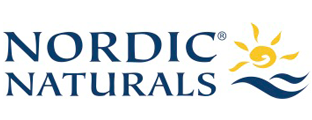



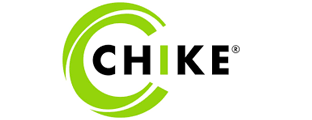















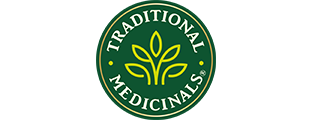








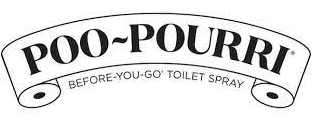


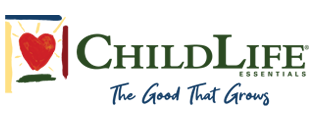



































 Table of Contents
Table of Contents







